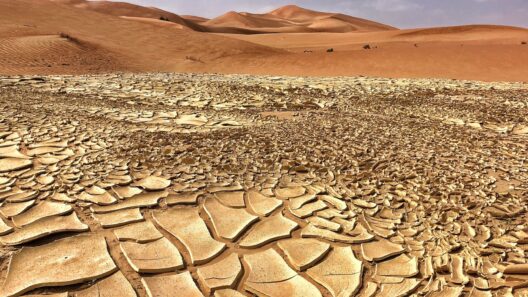The Mediterranean climate is renowned worldwide for its alluring charm and enviable conditions, captivating both inhabitants and visitors alike. Characterized by sun-kissed coasts, vibrant landscapes, and milder winters, this region is a testament to nature’s ability to create environments that foster rich biodiversity, agriculture, and traditional lifestyles. Understanding the intricacies of the Mediterranean climate reveals not just a superficial beauty but a complex interplay of geological, atmospheric, and human factors that contribute to its unique profile.
At the core of the Mediterranean climate is its distinct climatic classification, referred to as Csa and Csb in the Köppen climate system. This classification denotes hot, dry summers and mild, wet winters. The Mediterranean basin, which encompasses parts of Southern Europe, North Africa, and the Levant, embodies this climate, but variations abound depending on geographical factors. Coastal areas, where the sea exerts a moderating influence, enjoy more temperate conditions than the inland regions, which can experience more extreme temperatures.
During the summer months, the Mediterranean is graced with long days of brilliant sunshine, with average temperatures soaring above 30°C (86°F) in many areas. This relentless warmth, combined with scant rainfall—often less than 30 mm (1.18 inches) per month—creates a drought-like scenario wherein vegetation adapts to conserve water. The iconic olive trees, aromatic herbs like rosemary, and hardy shrubs demonstrate remarkable resilience in this sun-drenched setting. As autumn approaches, conditions cool slightly, leading to a gradual reawakening of flora, which relies on the autumn and winter rains for sustenance.
Winter, in contrast, brings a nuanced transformation to the Mediterranean landscape. Temperatures tend to hover around 10–15°C (50–59°F), particularly in coastal regions. This mildness is often associated with the mitigating effects of the nearby Mediterranean Sea, which retains warmth longer than the land. The winter rains rejuvenate the parched earth, facilitating an explosion of color and life come spring. This cyclical dependence on seasonal variations underscores not only the resilience of life in this region but also the intricate ecological balance that sustains it.
The geographical diversity within the Mediterranean basin contributes significantly to its climatic tapestry. Mountain ranges such as the Alps, Pyrenees, and Atlas Mountains affect precipitation patterns through orographic lift, resulting in that profound variety of microclimates. The valleys may bask in peaceful warmth, while higher altitudes experience cooler climes, leading to an impressive range of endemic species adapted to diverse habitats. Such biodiversity is a key point of fascination for scientists, ecologists, and nature enthusiasts alike, prompting explorations into biological adaptations that have arisen through eons of evolution.
The interplay between climate and culture in the Mediterranean region is equally palpable. The climate has historically influenced agricultural practices and the lifestyle of populations that have settled along its shores. Mediterranean crops, such as grapes, olives, and citrus fruits, thrive in this climate, shaping culinary traditions synonymous with the region. These agricultural products not only sustain human diets but also underpin local economies and cultural identities. The food culture of the Mediterranean is celebrated globally; dishes imbued with local flavors narrate the stories of generations and their intimate relationship with this remarkable environment.
The allure of the Mediterranean climate extends beyond personal and cultural experiences. It serves as a macrocosm of contemporary ecological considerations. As climate change continues to exert its influence worldwide, the Mediterranean region faces unique vulnerabilities. Rising temperatures and altered precipitation patterns intensify drought conditions and amplify the risks of wildfires. As climates become increasingly unpredictable, the delicate balance of the Mediterranean ecosystem may be disrupted, creating ripple effects across biodiversity, agriculture, and water resources.
The environmental challenges posed by climate change spur a renewed focus on conservation efforts and sustainable practices. Local initiatives aimed at preserving the unique flora and fauna, as well as sustainable agriculture, have gained momentum. Habitat restoration projects, water conservation strategies, and the promotion of indigenous agricultural practices showcase the communal recognition of the fragility of this climate. Awareness campaigns emphasize the importance of safeguarding the Mediterranean environment for future generations, illuminating the interconnectedness of climate, culture, and conservation.
This pursuit of sustainability also intersects with the burgeoning interest in eco-tourism. The picturesque landscapes of the Mediterranean are drawing visitors eager to embrace nature while supporting local economies. This paradigm shift—away from mass tourism that exploits the environment toward sustainable practices—encourages a conscientious appreciation of the region’s beauty. It cultivates an understanding of the enduring significance of preserving the Mediterranean climate, elucidating the intricate relationship between human actions and environmental outcomes.
In sum, the Mediterranean climate offers a rich tapestry woven together by sunlit vistas, mild winters, and a complex interplay of ecology and human influence. Observing its nuanced dynamics encourages a deeper understanding of not only the climate itself but also the cultural heritage it fosters and the environmental challenges it faces. The Mediterranean stands as both a haven of natural beauty and a poignant reminder of the pressing need to reconcile our aspirations with the preservation of the delicate ecosystems that support life. It is a domain that inspires a fascination that transcends mere aesthetic appeal, inviting us to explore and understand the profound connections we share with our environment.





